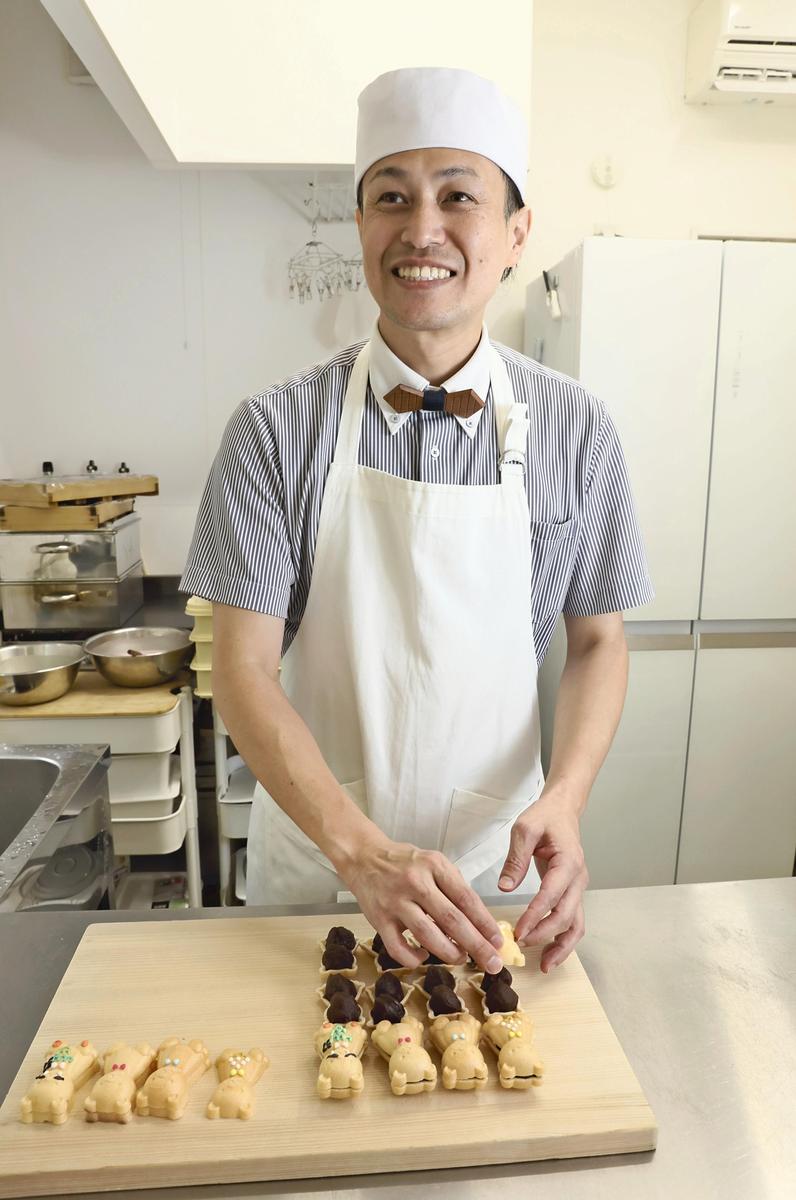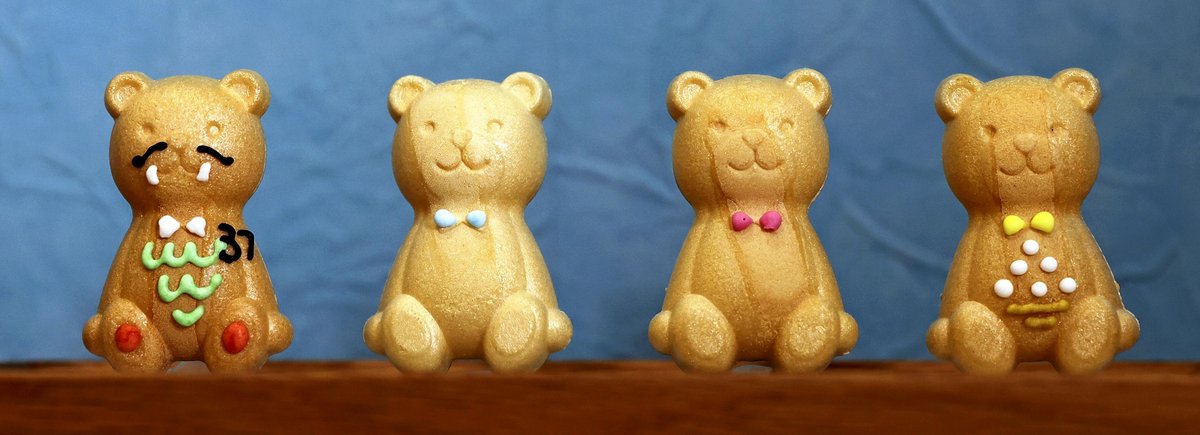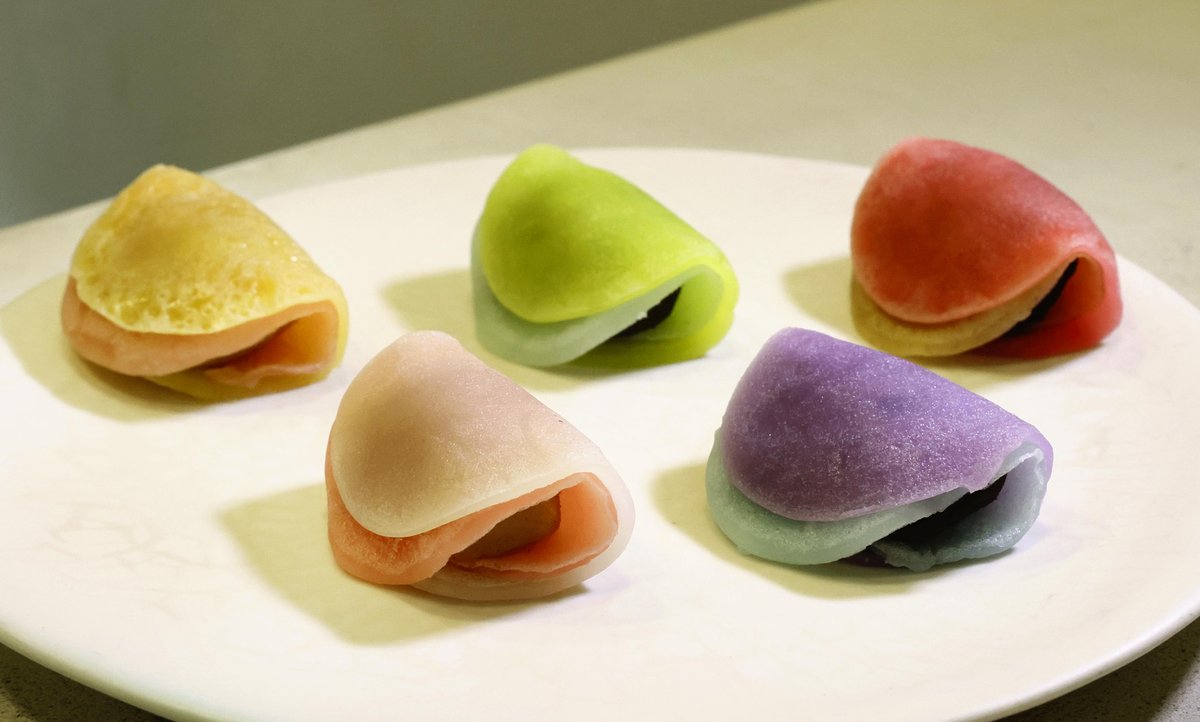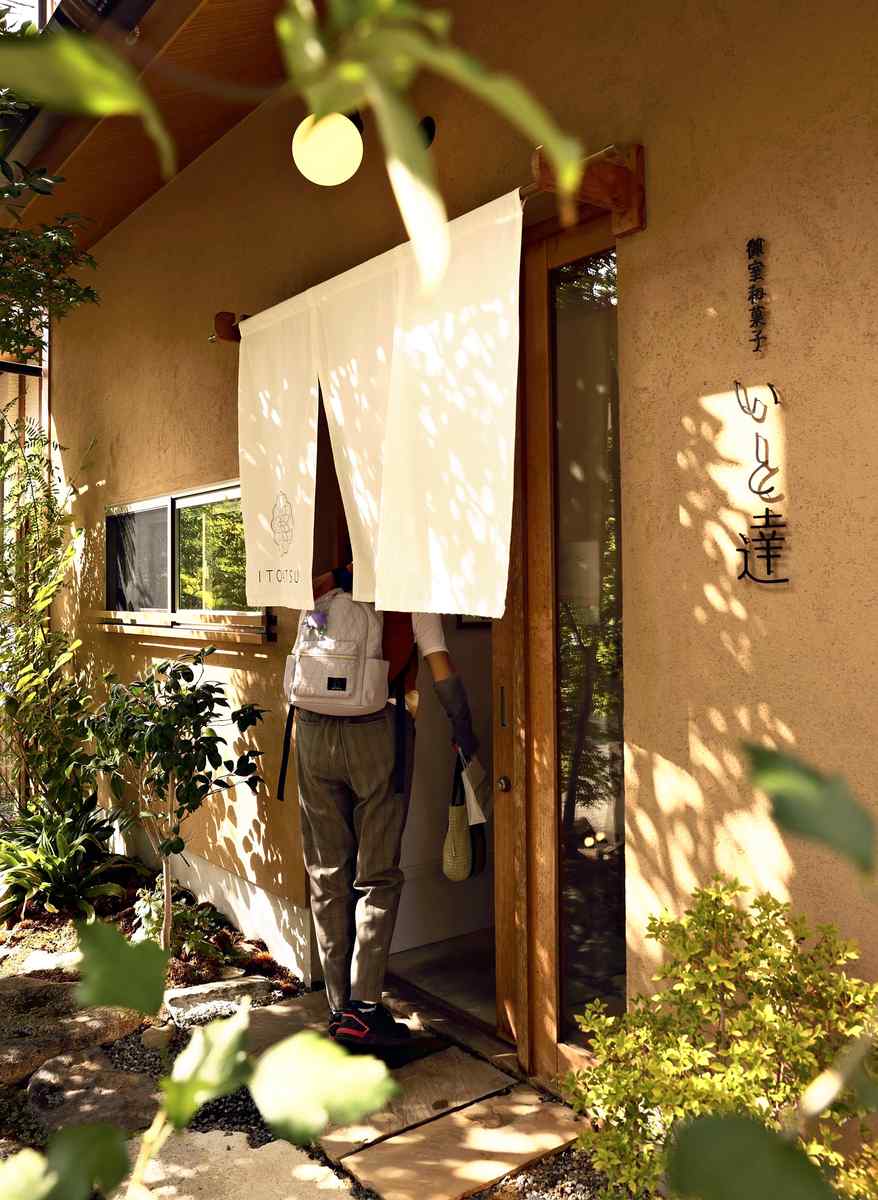 The Yomiuri Shimbun
The Yomiuri Shimbun
Wagashi confectioner Tatsuya Ito makes bear-shaped monaka at his shop in Ukyo Ward, Kyoto.
11:20 JST, November 15, 2025

KYOTO — The Omuro area in Ukyo Ward, Kyoto, is a popular gateway to Ninnaji temple, which is a UNESCO World Heritage historic monument. Walking into a quiet residential street away from the Kinukake-no-michi tourist path, visitors will reach the Itotatsu wagashi Japanese sweets shop, which has a green garden.
The shop’s owner, wagashi confectioner Tatsuya Ito, 41, wears a bow tie at work. When I visited his shop, Ito was making adorable bear-shaped monaka sweets. He shaped the filling, made by cooking koshi-an (mashed red bean paste) sweetened with brown sugar and Ikkyu-ji natto (fermented savory soybeans produced at the Ikkyu-ji temple) together, into small balls. He then carefully placed two of the balls into each bear-shaped crisp wafer.
The bear-shaped monaka sparked a buzz in 2021 when professional shogi player Sota Fujii, the holder of three major titles at the time, chose it as a snack during the second game of the Ryuo shogi title match at Ninnaji temple.
 The Yomiuri Shimbun
The Yomiuri Shimbun
These popular bear-shaped monaka feature various designs on their bellies, some of which change with the seasons.
Its surface features a bow tie made with “suri-mitsu,” a mixture of sugar, white bean paste and sticky rice flour that is colored for effect. Seasonal designs sometimes adorn its belly. For example, in autumn it features an image of tsukimi dango, or moon-viewing dumplings.
“Even with the same flavor, wagashi sweets let you feel the seasons as they are made to look different depending on the time of year,” Ito said. “I’m delighted to imagine the conversations that will be sparked when you share these sweets with someone.”
Gateway to tradition
Ito lived in Toyota, Aichi Prefecture, until high school. Every year during the New Year holidays, he visited his grandmother and received a New Year’s gift of money along with wagashi.
This once-a-year treat was a special thing for him. He also had an interest in making sweets from a young age.
 The Yomiuri Shimbun
The Yomiuri Shimbun
Hiyu, a fresh sweet, uses bean paste in two colors.
“Wagashi made in Kyoto are called ‘kyo-gashi,’ and have a strong brand identity,” Ito said. “I wanted to learn the craft in Kyoto, the capital of wagashi production.”
He moved to Kyoto after high school and trained for about 17 years at various places, including the long-established confectionery shop Sasaya Iori.
During his apprenticeship, he found the meaning in making wagashi when he saw a customer smile. He was further motivated when he demonstrated techniques at wagashi classes and heard participants say, “That’s amazing.”
 The Yomiuri Shimbun
The Yomiuri Shimbun
The Tsutsumi Mochi features three types of sweet bean paste and delightful colors.
“I felt they recognized the skills I’d learned,” Ito said. “These techniques have been passed down by our predecessors. I thought their efforts deserve more attention.”
This conviction grew, leading him to decide to become independent and create a space that would embody his vision. In October 2019, he opened his shop in Omuro, near his wife’s family home.
Kyo-gashi sweets include those made for temple and shrine events, as well as seasonal treats such as minazuki for June and inoko mochi for November.
While preserving the techniques and flavors passed down through generations, Ito strives to create visually appealing, charming sweets with vibrant colors, hoping that they will serve as a gateway to the world of wagashi, even for those unfamiliar with its history.
Distinctive originality
Itotatsu’s signature product, Tsutsumi Mochi (bean paste wrapped in mochi), features gentle yet eye-catching hues reminiscent of cherry blossoms or autumn leaves. Ito developed the product himself. Using two layers of mochi in different colors, it imitates the effect of layered cloths in different colors seen in the attire of courtly people during the Heian period (794-late 12th century).
Among three types of bean paste filling prepared by Itotatsu for the product, one uses kinako powder from black soybeans and Kyoto white miso to create a rich flavor.
 The Yomiuri Shimbun
The Yomiuri Shimbun
Ito’s shop only accepts one group of customers at a time so he can focus on conversing with them.
Ito based the texture of the mochi on uiro, a famous confection from his hometown. The mochi is made by blending three types of sticky rice flour and lightly baking it over low heat to achieve a comfortably chewy texture.
During his apprenticeship, he was taught: “Why does your shop offer this sweet? If you can’t tell a story about the product, it won’t sell.” Tsutsumi Mochi, the unique product that only he can make, is his answer to that question.
He is also good at adding intriguing twists to traditional sweets.
For a product designed after the ayu sweetfish, he adds a red dot to the fish’s cheek to make it look tipsy, as the dough contains sake.
For the baked sweet named momoyama, he accentuates it with strawberry jam.
His unique ideas shine thanks to the traditional techniques he has mastered so far.
The shop’s open layout, which features a visible kitchen area, embodies the owner’s desire for customers to understand the process of making confectionery. He adds the finishing touches for fresh sweets and monaka after receiving each order. Seeing the process makes people want to eat them. Knowing that they are very fresh enhances their value and flavor.
To facilitate conversation with the confectioner, only one group of customers is admitted to the shop at a time. After listening to customers with allergies, Ito has even reviewed the ingredients. These conversations have created new dimensions to wagashi making.
While building relationships with his customers through wagashi, Ito continues to add a playful creativity to traditional techniques.
***
If you are interested in the original Japanese version of this story, click here.
Related Articles


AloJapan.com